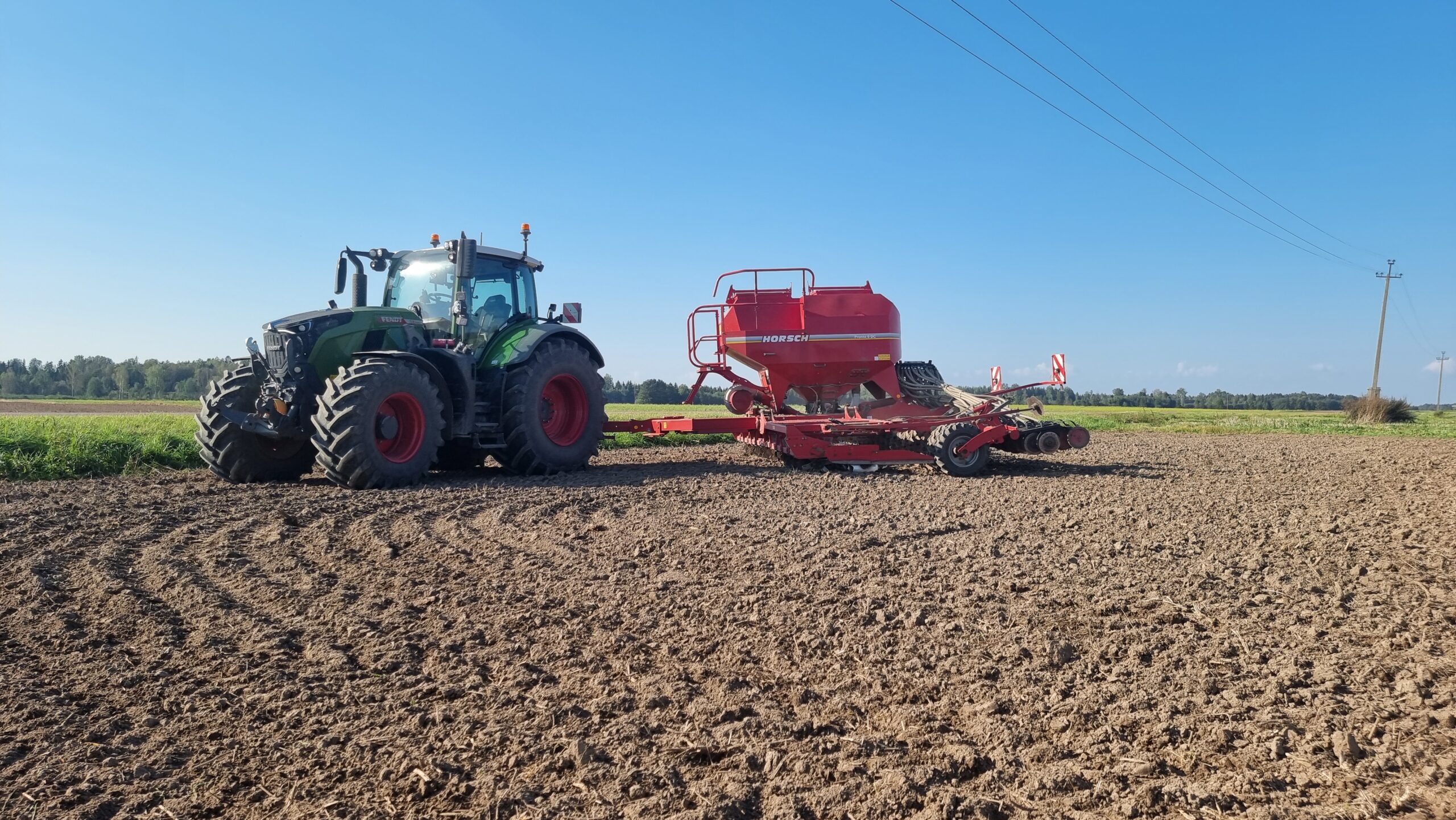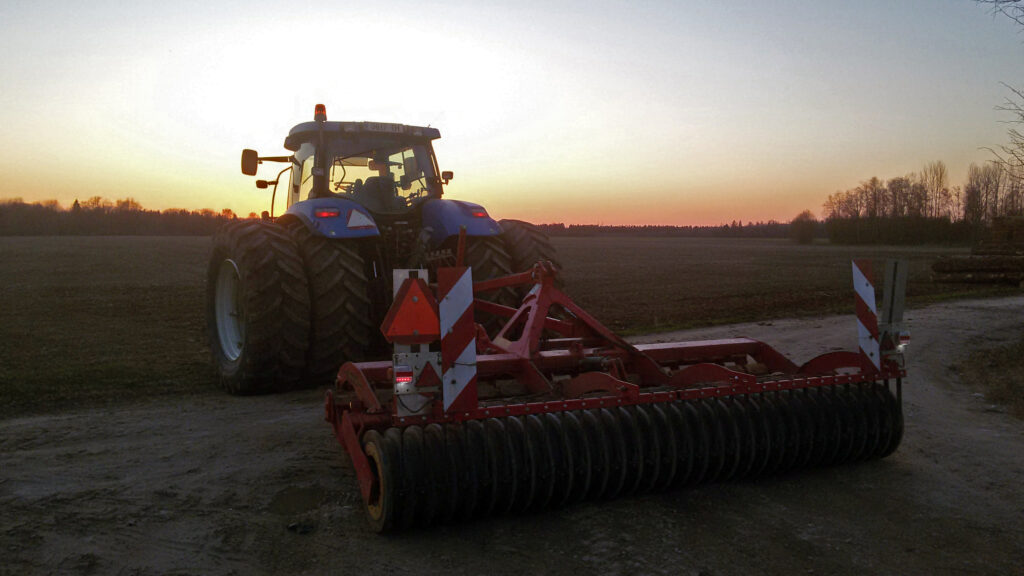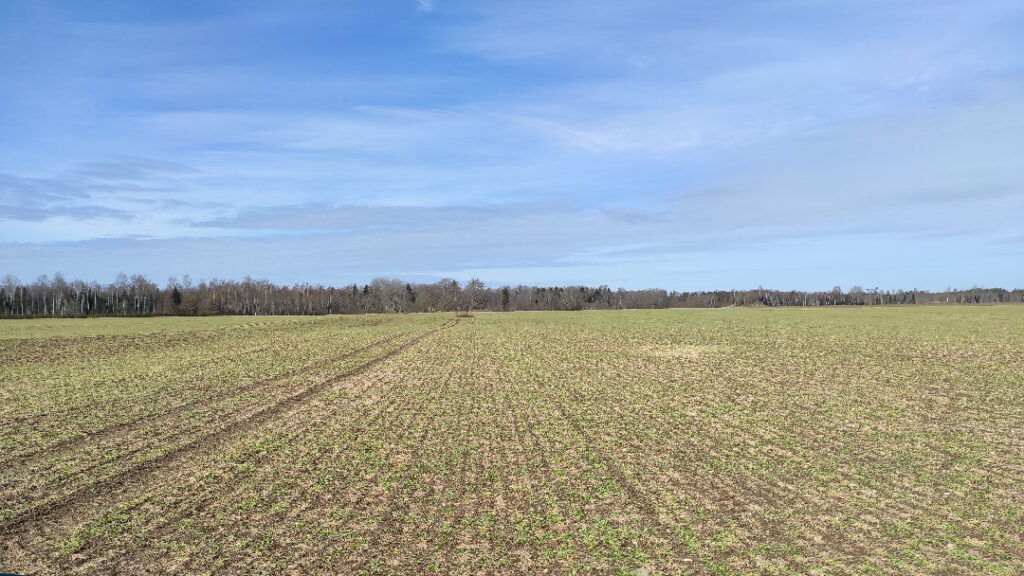Backstory
When salesman Tõnis called me (by the way, when we later met in person, he said it’s nice to meet someone with a cultured name 😊), my blue tractor with white wheels had decided that it wouldn’t move its rear linkage anymore. I needed to prepare the land for winter rape before the rain, and understandably, I was frustrated.
I vented my frustration on social media, and just like in the movies, Agriland’s team picked up on it and immediately offered me the chance to try a Fendt. By then, however, I had already spoken with a good friend and borrowed a tractor. We agreed to talk again in mid-to-late August. Meanwhile, other influencers got ahead of me, and the tractor traveled to the other side of Estonia for a while. Still, on a Monday evening in early September, I received a call saying the tractor would arrive the next day.
It’s Here
Excellent! I needed to pull a 6m stubble cultivator across fields that I had tilled when they were too wet (read: keep a rubber between your teeth), and sow 12 hectares of hybrid wheat trial plots. This would give me the chance to try the tractor in really bad conditions, with plenty of start-stops, using GPS and testing the automatic field end system.
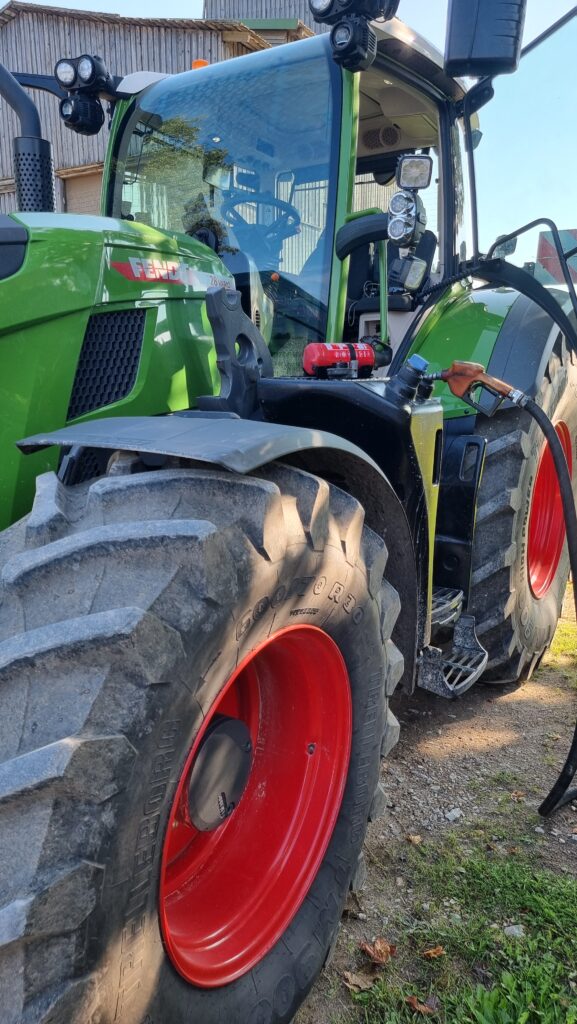
Since I have eyes, have seen pictures, and even taken a ride in one, when the tractor arrived, all I could say was, “Looks just as good as in the brochure :D.”
Marko (the product demonstrator) showed me how things work: how to drive, how to juggle between three screens, how not to settle for a simple AB line, how to import-export, and how the machine could take some of the workload off my hands.
After the guys left, I hurried off to spread fertilizer with another tractor, though I did it with a clear sense of regret, as I would’ve rather been zooming on the road at 66.1 km/h (though officially, I drove at 25 km/h with a trailing implement) to cultivate stubble.
First Impression
OH YES, this is a whole new level. I had only driven 100 meters when I realized I was riding on a cloud. This tractor is so smooth and precise that I had to rub my eyes to believe I was on the same road where my personal tractor would toss me out of the seat, yet here, in the Fendt, it was just a gentle sway…
Okay, Tõnis, calm down. It’s great on the road, but this can’t last on a field resembling a moonscape, right? Wrong—it continued just as smoothly. I don’t know what kind of black magic is at work, but it proves that you can make a soft-riding tractor, even one with a 9-ton empty weight.
Smooth Ride, But Low Power?
I won’t dwell on Fendt’s continuously variable transmission (CVT) because there’s hardly anything new to say when you’re talking about the inventor of the CVT for tractors. Yes, it worked so seamlessly that I didn’t even notice if there was anything between the engine and the wheels. My only slight critique is that the transmission has four modes—basically, for how quickly it accelerates and decelerates. The first mode was too soft, the second too aggressive, and it felt like there should be a setting between modes 1 and 2.
My main implement for soil cultivation is the Horsch Terrano 6FX, with an official power requirement of 240-360 horsepower. My 240hp CVT tractor pulls it at around 7 km/h, a CVT 6250R at around 9 km/h, and the Fendt did it at 10 km/h. So, those 300 horses were well utilized, without much left over.
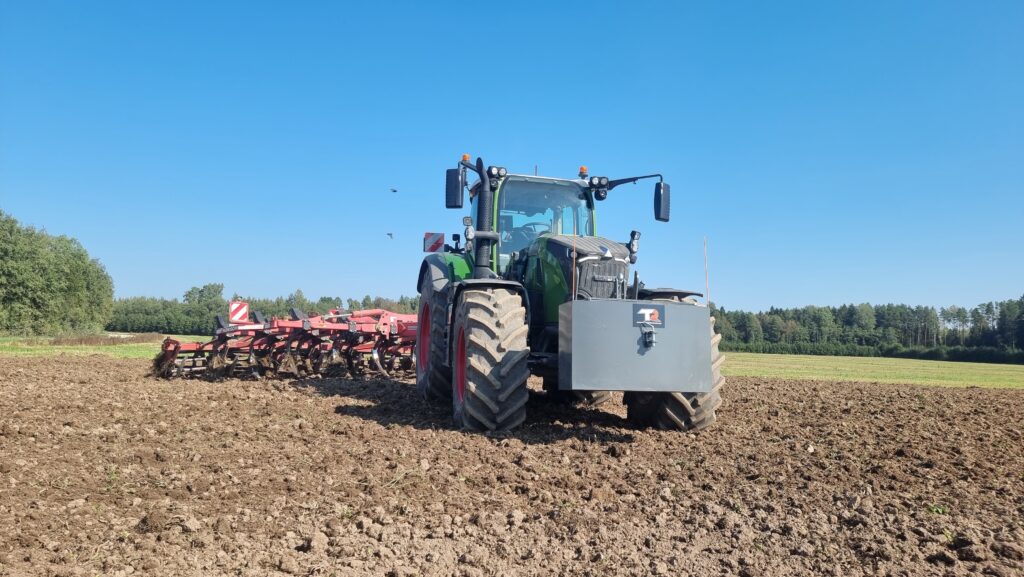
But a key aspect here is comfort and how the power is delivered.
If you’ve worked with a stubble cultivator, you know that every rock or tougher spot can deliver quite a jolt to the tractor, which is directly transmitted to the driver in the cab. If the field is rocky, it can be downright unpleasant as the stone protection kicks in with a punch to the kidneys. However, the 728 surprised me by keeping much of the rear-end activity from affecting the cab.
Most of the pulling was done at around 1400-1500 RPM, meaning the engine hummed quietly, and nothing in the drivetrain was too jarring on the ears.
By the way, the Fendt lacks a four-wheel-drive button—the tractor decides where the power is needed and engages four-wheel drive if necessary. During heavy pulls, I did notice a slight thump from the front end when I lifted the stubble cultivator—maybe from disengaging the clutch? I didn’t feel it with the drill, but that was a lighter load.
Another impressive feature is how well this tractor turns, largely thanks to the magic where the outer wheel is accelerated, resulting in sharper turns. How exactly does it work? I don’t know! Did it turn before hitting the bush? Absolutely!
Cabin, Workplace, Office, Lounge?
During the 3 days and 25 working hours I had with it, I certainly didn’t use all the tractor’s features—probably only 25% at best. The configuration options are practically endless. If you put in a bit of effort, you could probably have the 728 sing you “Happy Birthday” and bake a cake.
And here’s something to think about—if you buy a fully equipped tractor, be sure to listen to what’s being explained to you about those features. A tractor driver’s life can be made very easy with minimal effort. Work gets better. Life gets better. Everything gets better.
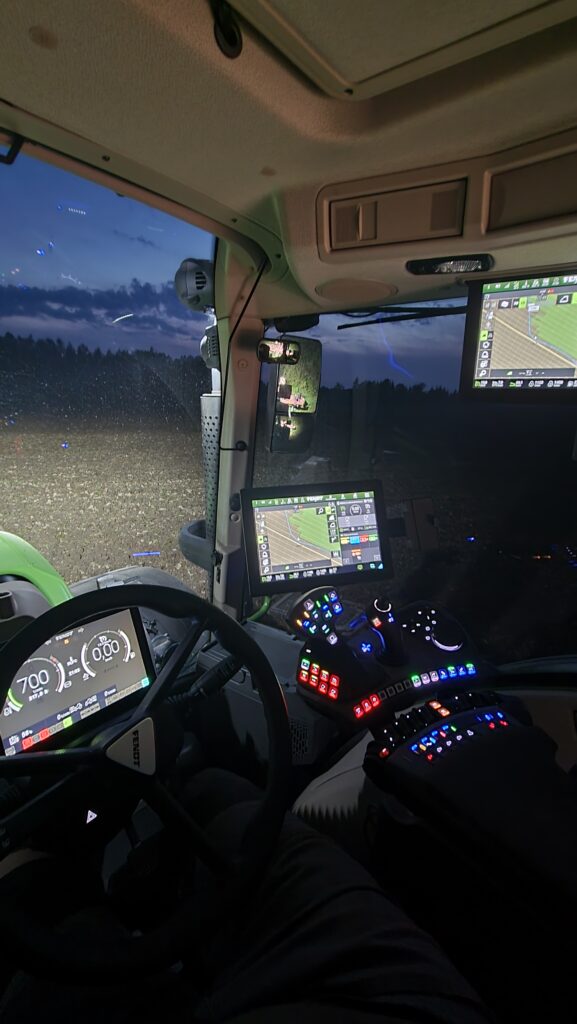
RTK GPS and its logic were quickly understood, and again, there are many options for creating different lines. You essentially don’t need to touch the steering wheel if you use them all. I got the automatic turning to work, but I didn’t have enough time to set it up properly, so I can’t make definitive conclusions about it.
I really liked the interior and materials in the cab. The controls were particularly fancy, as they are actually small screens—when you change the function of a button, the symbol on the button changes too.
The only problem with the cab is that it feels a bit cramped. I had the same complaint with the Valtra, and since it’s part of the same corporation, it felt similarly a bit restrictive. There’s plenty of space for the driver and compartments, but I would’ve liked more air around me…(first-world problems).
By the way, getting in and out is made easy with a castle-like staircase that easily accommodates a couple of beefy farmers. Why would two farmers stand on the stairs at the same time? Well, how else can I illustrate this?! 😀
At first, the joystick felt a bit cumbersome and overloaded with buttons, but as I used it, I began to like it. It felt ergonomic once I started to get the hang of things. The only issue I couldn’t quite adjust to was Fendt’s logic of driving either with the pedal OR the joystick. You can’t use both at once, and when I switched between them and forgot, some rather funny stalls happened on the field 😀
Who Built It?
In a fit of euphoria, I’d shout that maybe God personally did! But sticking to the Estonian pagan tradition, it probably went something like this—a group of the best minds gathered in Fendt’s development department.
They thought, “We already have pretty good tractors, but can we make them even better?” “Can it be done even better?” an engineer might ask. “Won’t that be too expensive?” a bookkeeper might wonder. These people were overruled, and they made it even better. They built a great tractor, and though there are minor things one could nitpick, they didn’t overshadow my overall excellent user experience.
As for the price, good things cost money. We have the option to buy it or not, but it’s nice that we have the option.

